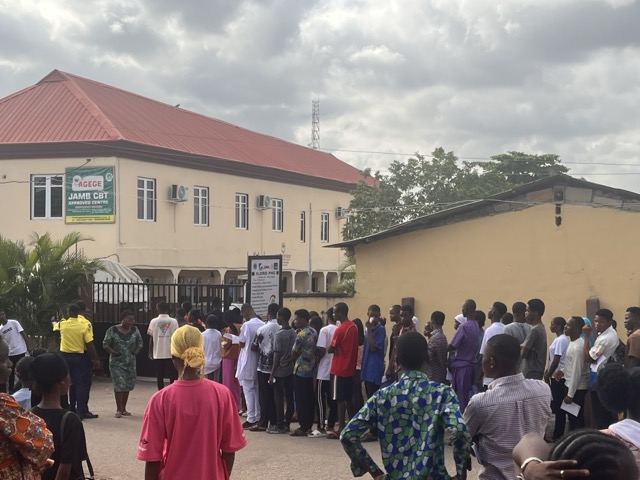New At-Home Blood Test Shows Risk of Preeclampsia
The first and only at-home blood test that predicts a pregnant person’s risk of developing preeclampsia has launched. Known as Encompass, the test from Mirvie can predict the condition months before symptoms appear, giving pregnant people time to take preventative steps.
Preeclampsia, a disorder causing high blood pressure during pregnancy, is a serious condition that affects 1 in 12 pregnancies in the U.S. The World Health Organization (WHO) reports that preeclampsia is responsible for around 46,000 maternal deaths and around half a million fetal deaths worldwide each year.
A test that can accurately predict preeclampsia based on a person’s biology will help ensure they can get the proactive, personalized care they need, says Dallas Reed, MD, FACOG, FACMG, an OB-GYN, advisor to Mirvie, and medical geneticist.
“Before Encompass, we used personal and family history factors in combination with demographic factors to predict who may be at moderate or high risk of developing preeclampsia,” says Dr. Reed. “Unfortunately, these guidelines put most patients in at least a moderate risk category, which was more of a one-size-fits-all approach.”
According to Dr. Reed, when a pregnant person starts experiencing symptoms of preeclampsia, it’s often too late to take preventive action. “Preeclampsia is one of the most common complications in pregnancy and significantly impacts maternal and neonatal morbidity and mortality,” explains Dr. Reed. “So not only can it be dangerous, but it can also be traumatic for pregnant people and their families.”
If a pregnant person is identified as high risk with Encompass, Dr. Reed says they can work with their care team to take extra precautions, such as additional monitoring with specialists, adhering to daily low-dose aspirin, monitoring blood pressure at home, and making lifestyle changes that can reduce their risk. It allows them to create an action plan and work with their health care provider to have the healthiest pregnancy and delivery possible in their situation.
“Knowing that a patient is at high risk may also help the physician understand that their patient’s nagging headache, a common pregnancy complaint and also a symptom of preeclampsia, should be taken more seriously,” explains Dr. Reed.
A previous blood test to detect preeclampsia was also released from Labcorp in 2024. It's always a good idea to speak with your health care provider about your risks and if you have questions about taking any tests.
Encompass is a blood test collected through an at-home visit between 18 and 22 weeks of gestational age, with no need for a trip to the lab. “It’s initially being rolled out for pregnant people who will be 35 or older at their due date with no pre-existing high-risk conditions for preeclampsia," says Dr. Reed.
The test analyzes RNA from the pregnant person, placenta, and fetus to detect gene expression patterns. Higher levels of some genes suggest a higher risk of preeclampsia. For instance, the higher the level of the PAPPA2 gene, the higher the risk of preeclampsia.
For those interested in being tested, you simply contact the company through its website to purchase a test. After a telehealth professional confirms eligibility, the blood test kit is mailed directly to your home.
During the 18th and 22nd week of your pregnancy, you will schedule an at-home blood draw and will receive the results in about 10 to 14 days, along with a proposed action plan. You can also ask that your health care provider receive the results as well, so that they can develop a care plan if you happen to be at high risk for preeclampsia.
If you are identified as high risk, Dr. Reed says an ongoing, virtual SMS-assistant is available to provide education and reminders to help reduce the risk of developing preterm preeclampsia.
“From the clinician's perspective, what I'm most excited about Encompass is how this test can identify which patients are at highest risk of pre-term preeclampsia and which patients are not,” she says. “And this personalized risk data allows me and my practice to make sure we provide the extra support needed for someone who is at high risk, while allowing me to provide better guidance to my low-risk patients.”
According to Dr. Reed, the work behind Encompass began seven years ago at Stanford University and is backed by multiple research studies. A recent study involving the preeclampsia test was able to identify how a person’s biology affects their risk as well as determine the test’s effectiveness.
The study, which was published in Nature Communications, found that Encompass correctly identified 9 in 10 eligible pregnancies that developed preterm preeclampsia as "high risk." It also noted that those with a “low risk” result had a 99.7% probability of not developing preeclampsia between 20 weeks and 37 weeks.
Anushka Chelliah, MD, a board-certified maternal-fetal medicine specialist at Pediatrix Medical Group in Houston, who is not affiliated with Mirvie, says this test, which was formulated from the research study in Nature Communications, could potentially screen for preeclampsia in people without typical risk factors. It also suggests that this test will be a good tool for objective and molecular-based risk prediction.
"It can provide early detection of preeclampsia months before symptoms, and offer options of closer surveillance and targeted interventions, which ultimately may improve outcomes,” says Dr. Chelliah. “Ultimately, this may improve management of hypertensive disease and reduce maternal and neonatal morbidity and mortality from early-onset preeclampsia.”
Preeclampsia is a serious condition that can progress to affect other organs, most commonly the liver, kidneys, and neurologic systems, says Dr. Chelliah.
“Preeclampsia typically starts after 20 weeks gestational age in a [pregnant person] who previously has no history of elevated blood pressure,” she adds. “It is more common in the third trimester.”
People with preeclampsia are at an increased risk for complications. According to Dr. Chelliah, those include stroke, cardiomyopathy, HELLP syndrome, liver failure or rupture, pulmonary edema, coagulopathy or bleeding disorders, end organ damage, or eclampsia.
"There are also increased risks of fetal growth restriction, stillbirth, placental abruption, and preterm delivery," says Dr. Chelliah.
Preeclampsia primarily occurs in first pregnancies. However, if you had the condition in a previous pregnancy, you are seven times more likely to develop it again in a later pregnancy. Here are some other factors that can increase your risk:
If you have some of these risk factors, Dr. Chelliah suggests talking with a health care provider before pregnancy to discuss ways to reduce the risk of developing preeclampsia.
It's characterized by high blood pressure that usually develops after the 20th week of pregnancy, says Dr. Reed. She says other symptoms can include:
- Pain in the right upper part of the abdomen, separate from the uterus
“Preeclampsia can progress rapidly and often occurs in healthy pregnancies that were otherwise progressing normally,” says Dr. Reed. “With current guidelines, we are not adequately able to identify who is truly at risk of developing this potentially life-altering diagnosis. This is why Encompass is so important. We can finally get ahead of it by learning the risk early.”
The risk of preeclampsia may be reduced with the use of low-dose aspirin, says Dr. Chelliah. “Strategies for preeclampsia prevention also have included the study of vitamins, fish oil, and antiplatelet agents, among others," shares Dr. Chelliah. "However, per guidelines of the American College of Obstetricians and Gynecologists, for [people] at risk of preeclampsia, low-dose aspirin should be considered for prevention.”
She says aspirin therapy is safe with use in the early second trimester and may reduce the risk of adverse pregnancy outcomes, including preeclampsia or recurrent preeclampsia, significantly.
The issue, says Dr. Reed, is accurately identifying pregnant people who are potentially at risk for preeclampsia. Currently, health care providers look at demographic and clinical factors like age, race, BMI, socioeconomics, and personal and family history. But she says this information may be biased.
“Most [pregnant people] have at least one moderate risk factor based on guidelines from the U.S. Preventive Services Task Force and the American College of Obstetrics and Gynecology,” she says. “That means that, with most of the patients I'm seeing, I'm having to have this conversation about preeclampsia, even though most will not develop the condition.”
She says there are also missed opportunities for preventative actions with this current approach. “The current lack of clarity surrounding preeclampsia risk doesn’t just fan the flames of anxiety; it can lead to missed critical windows for prevention," says Dr. Reed. "And for a condition that can escalate so quickly, often without warning, timing is everything.”








:max_bytes(150000):strip_icc()/Parents-6ThingsYourBabyCanDo-0dc4e1b0824e4eb18acc92befd941904.jpg)




